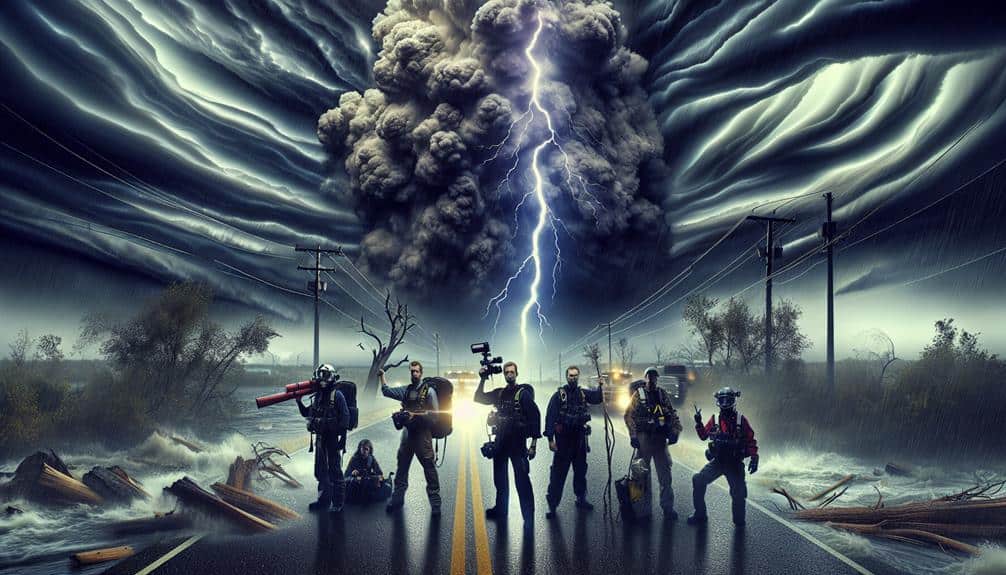To navigate storm behavior in our changing climate, we need to first analyze historical weather data and utilize current climate models to identify key trends. Next, let's deploy advanced technologies like satellite imaging, machine learning, and IoT-based weather stations to obtain real-time, localized data. Finally, we should enhance our safety protocols by integrating evidence-based strategies, conducting risk assessments, and amplifying emergency response capabilities. By focusing on these areas, we can develop more accurate forecasts and effective adaptation strategies, uncovering deeper insights into this dynamic issue.
Key Points
- Utilize satellite imaging and IoT-based weather stations for accurate, real-time storm data collection and monitoring.
- Implement machine learning algorithms to improve the precision of storm predictions and identify emerging patterns.
- Conduct comprehensive risk assessments using historical and current climate data to identify vulnerabilities in infrastructure.
- Regularly update emergency response protocols and train personnel to enhance preparedness and resilience.
Understand Climate Patterns
To understand climate patterns, we must analyze historical weather data and current climate models to identify trends and anomalies. This analytical approach helps us discern significant patterns that can inform both weather forecasting and climate adaptation strategies.
By examining decades of meteorological records, we pinpoint shifts in temperature averages, precipitation rates, and storm frequency. These datasets, when juxtaposed with advanced climate models, reveal how our climate is evolving.
We recognize that accurate weather forecasting hinges on understanding these underlying climate patterns. As these patterns shift, so too must our predictive models adapt. For instance, recognizing an increase in storm intensity or frequency can lead to more precise weather forecasts, essential for preparing communities and mitigating damage.
Moreover, climate adaptation is essential for maintaining our freedom in the face of changing environmental conditions. By understanding how climate patterns are shifting, we can develop adaptive strategies that bolster resilience. This might involve altering agricultural practices to suit new precipitation norms or redesigning infrastructure to withstand more severe weather events.
Ultimately, grasping these climate patterns empowers us to make informed decisions, protecting both our liberties and our environment.
Utilize Advanced Technology
Analyzing shifting climate patterns equips us with the insights necessary to leverage advanced technology for enhancing predictive accuracy and adaptive measures. By integrating sophisticated data analysis and cutting-edge monitoring systems, we can better understand storm behavior and make informed decisions that support both community resilience and individual freedom.
With the advent of technology, we can utilize:
- Satellite imaging: Provides real-time data on storm development and movement.
- Machine learning algorithms: Enables us to predict storm patterns with greater accuracy by analyzing vast datasets.
- IoT-based weather stations: Offers localized data collection, improving the precision of weather forecasts.
- High-resolution climate models: Simulates potential future climate scenarios, helping us prepare for various outcomes.
These technologies empower us to act proactively rather than reactively.
For example, integrating machine learning algorithms with real-time data from IoT-based weather stations can significantly enhance our predictive capabilities. Satellite imaging and drones further extend our ability to monitor and analyze storm behavior accurately.
Enhance Safety Protocols
Improving safety protocols requires a detailed review of current practices and the integration of new, evidence-based strategies to ensure community resilience against increasingly severe storms. To start, we need to conduct thorough risk assessments. This involves analyzing historical storm data, identifying vulnerable infrastructure, and predicting future storm patterns. By understanding these risk factors, we can tailor our emergency response plans to address the most important threats.
Next, let's focus on enhancing our emergency response capabilities. This means not only updating our protocols but also ensuring regular training for all emergency personnel. Simulated drills should be conducted frequently to refine response times and efficiency. We should also leverage technology for real-time data sharing and communication, which is vital for coordinated efforts during a crisis.
Lastly, public awareness campaigns are crucial. Educating the community on evacuation routes, emergency contacts, and safety measures can save lives. We should distribute clear, concise information through multiple channels, ensuring everyone knows how to act when a storm hits.
Frequently Asked Questions
How Can Community Planning Reduce the Impact of Severe Storms?
Community planning reduces severe storm impact by integrating green infrastructure and urban planning. We'll design permeable surfaces, stormwater management systems, and resilient buildings, ensuring adaptable, sustainable environments that enhance our freedom and safety during extreme weather events.
What Role Do Renewable Energy Sources Play in Storm Mitigation?
We can mitigate storm impacts using solar energy and wind power. These renewable sources reduce greenhouse gas emissions, thereby lessening climate change's severity and frequency, ultimately fostering resilience and promoting energy independence for our communities.
How Does Climate Change Affect Storm Insurance Rates?
A rising tide lifts all boats. As climate change intensifies, weather patterns become erratic, leading to higher insurance costs. We need to analyze data to predict future risks and prioritize freedom in our financial decisions.
What Are the Economic Impacts of Increasing Storm Frequency?
We see economic impacts from increasing storm frequency as businesses invest in resilience measures. Effective cost management becomes essential, as firms face rising operational expenses and potential revenue losses. Adapting strategies guarantees economic stability and freedom.
How Can Individuals Contribute to Storm Preparedness in Their Neighborhoods?
Imagine the power of united action: We can boost storm preparedness through active community engagement, assembling emergency kits, and enhancing neighborhood communication about evacuation routes. This collective effort secures our freedom and safety during unforeseen storm events.

